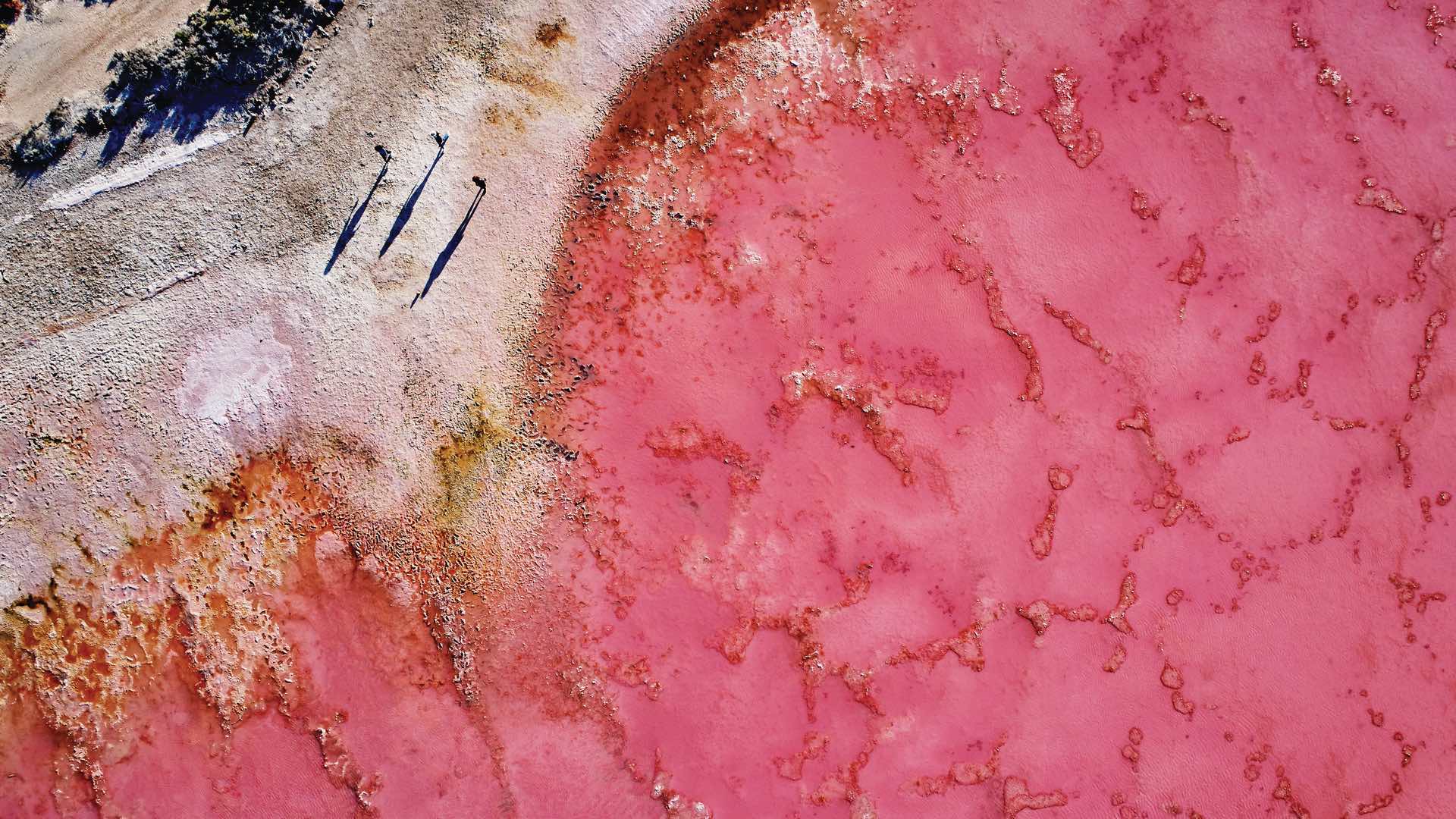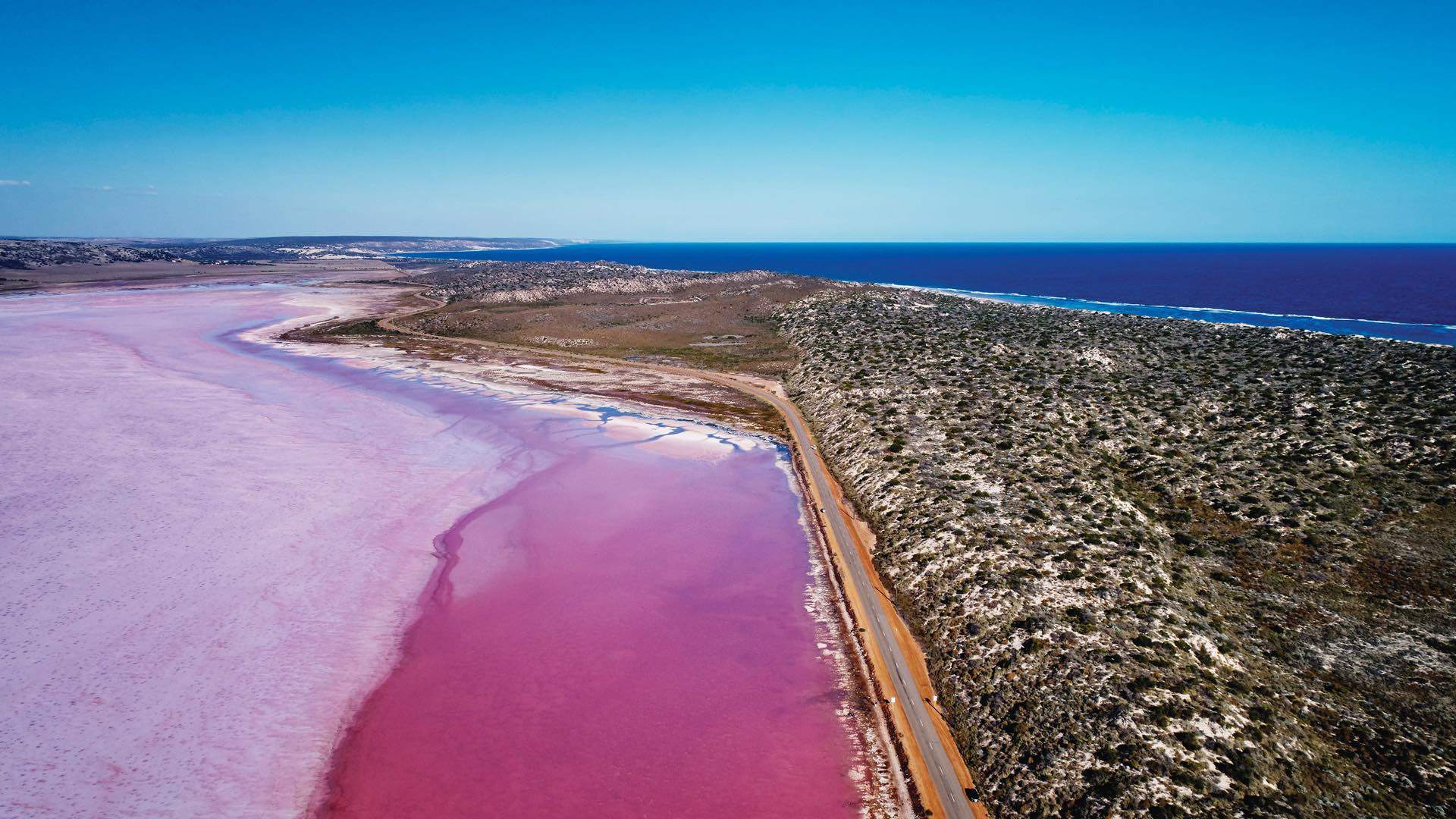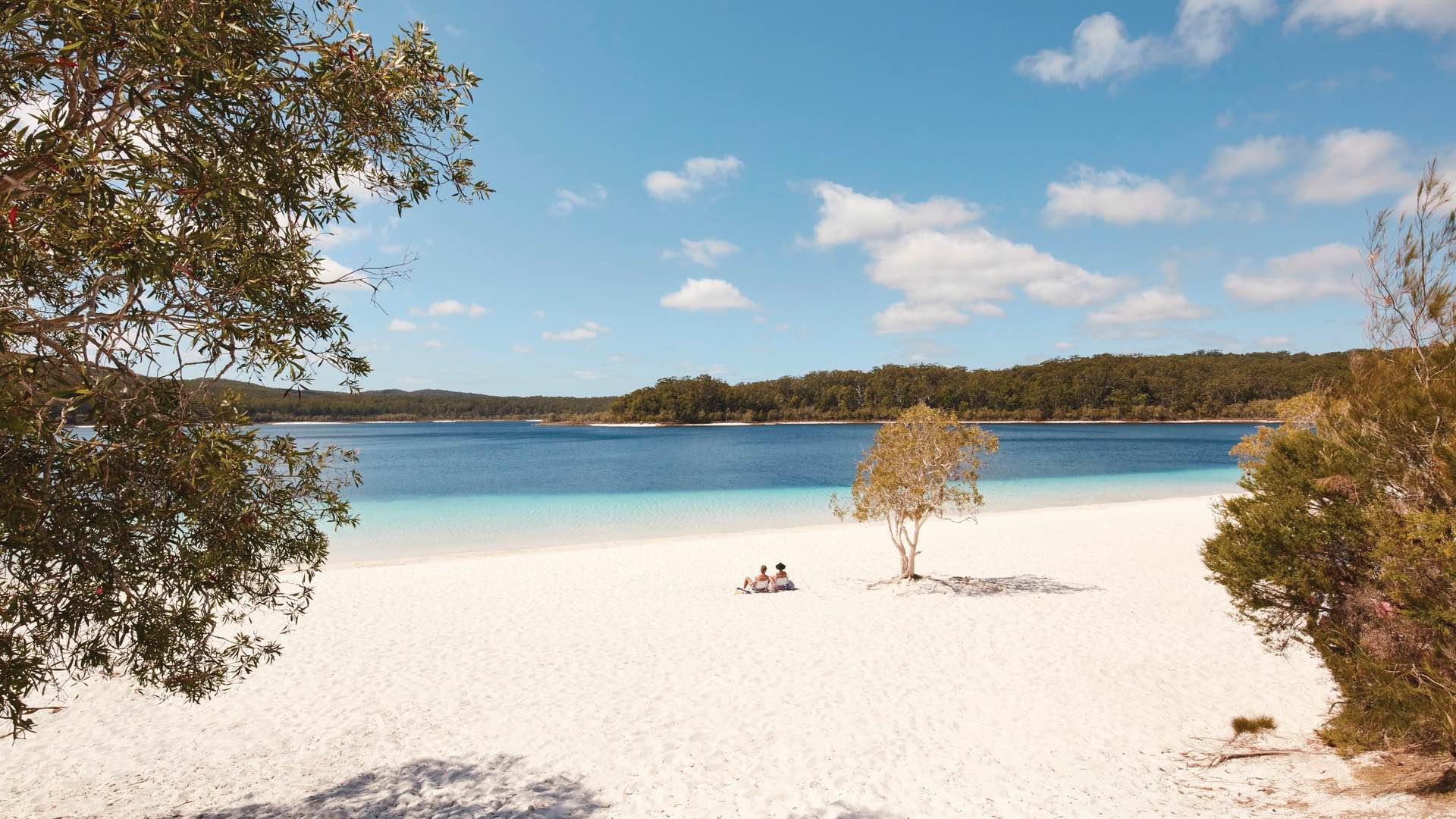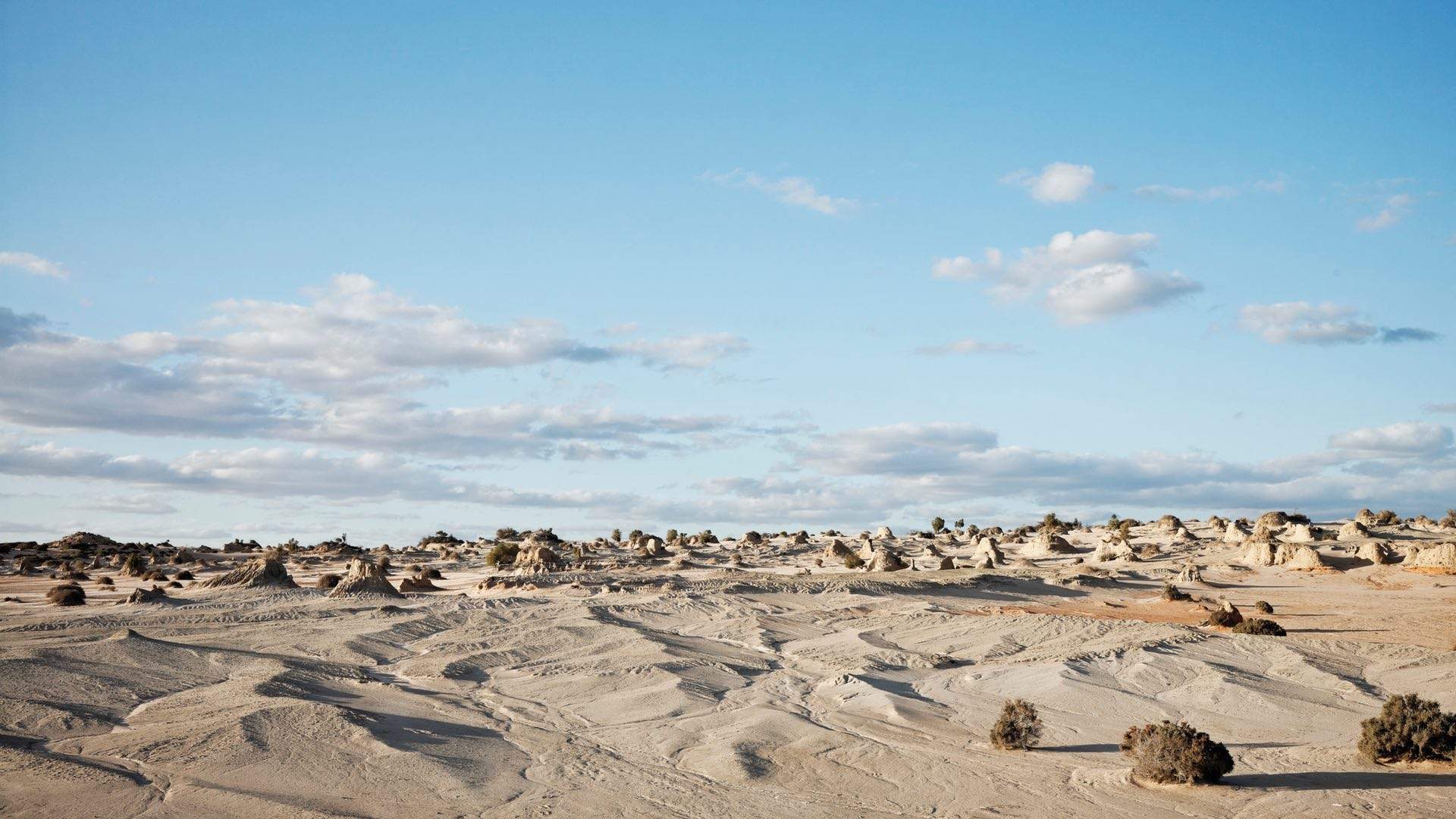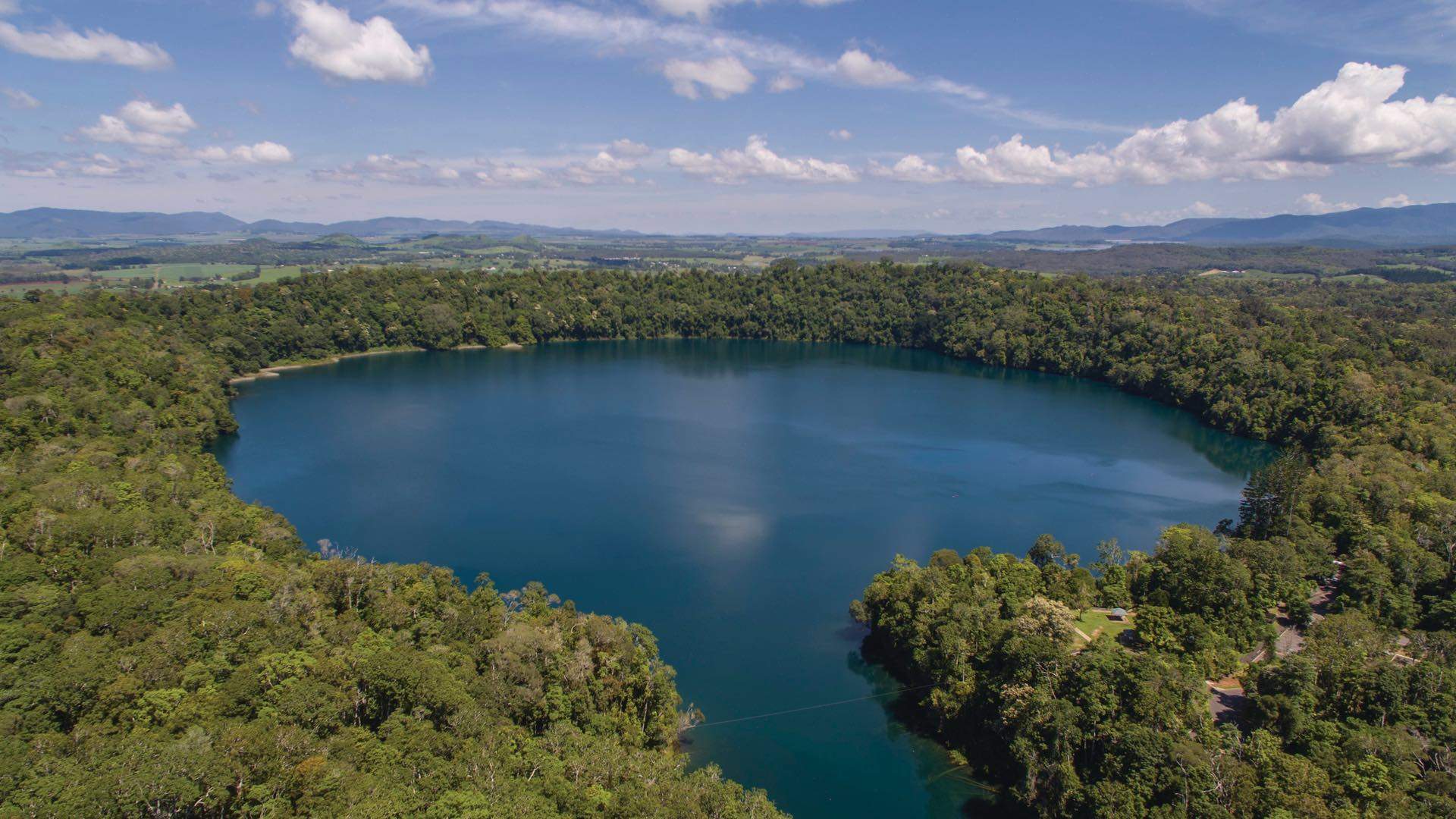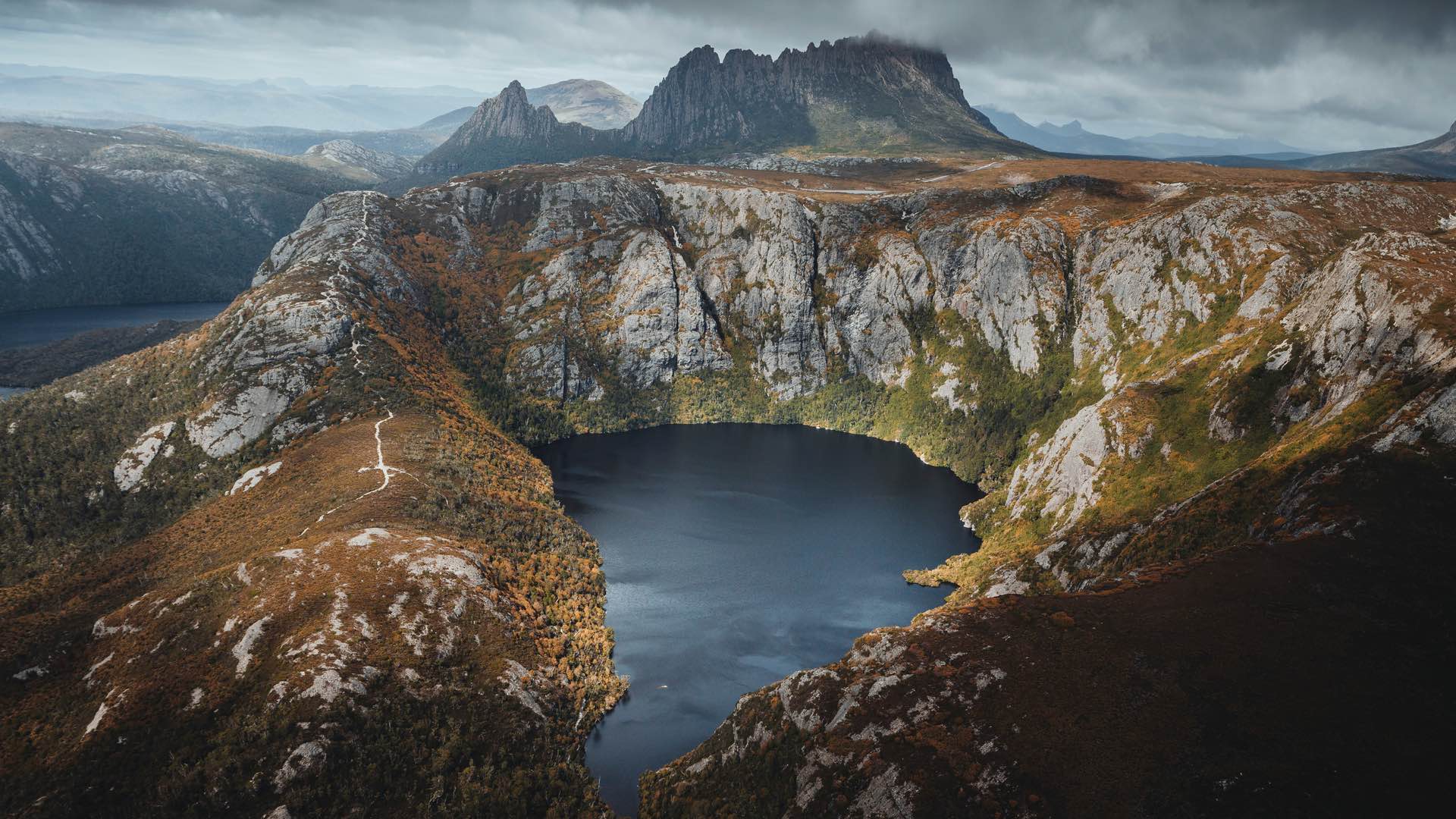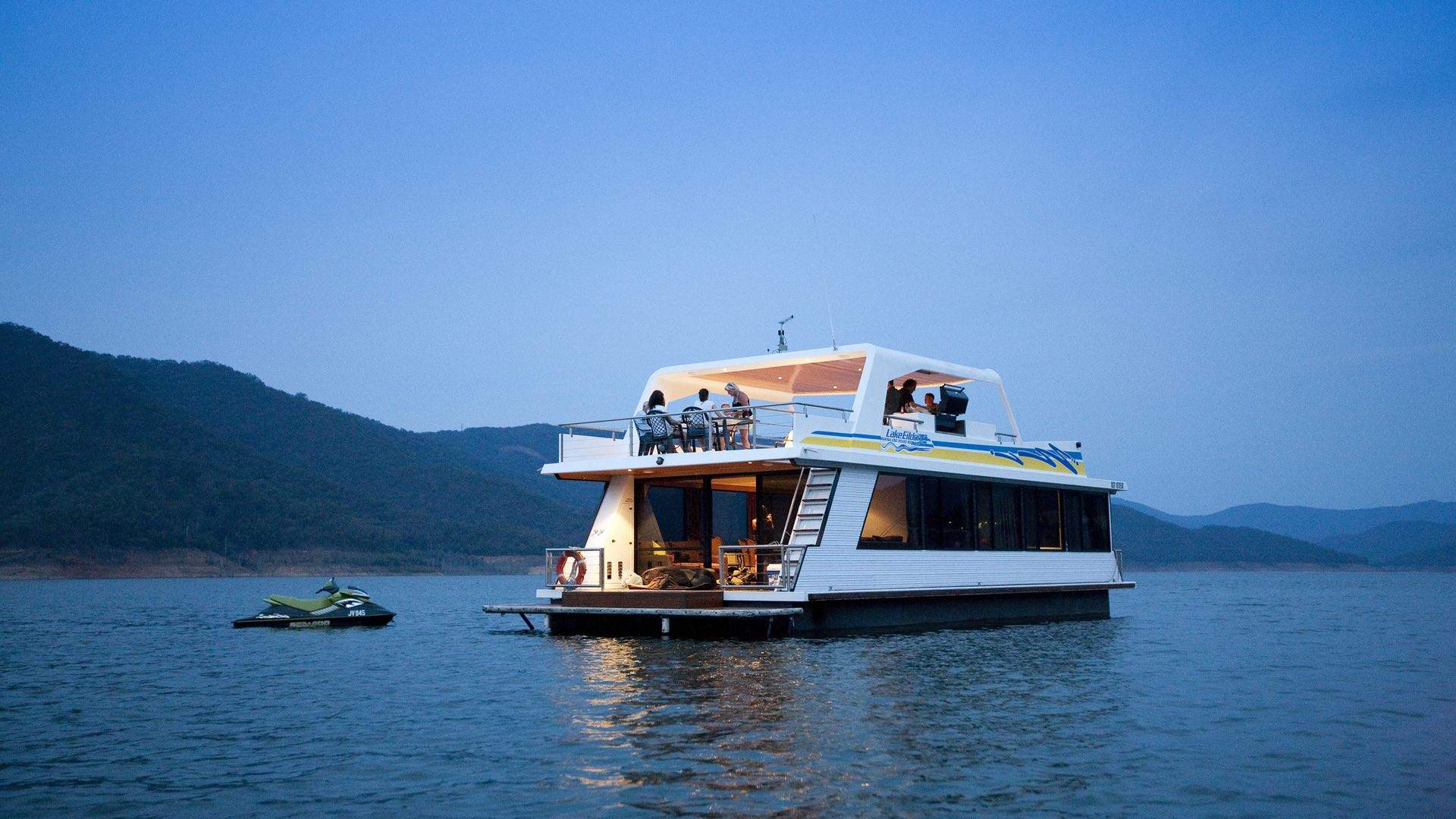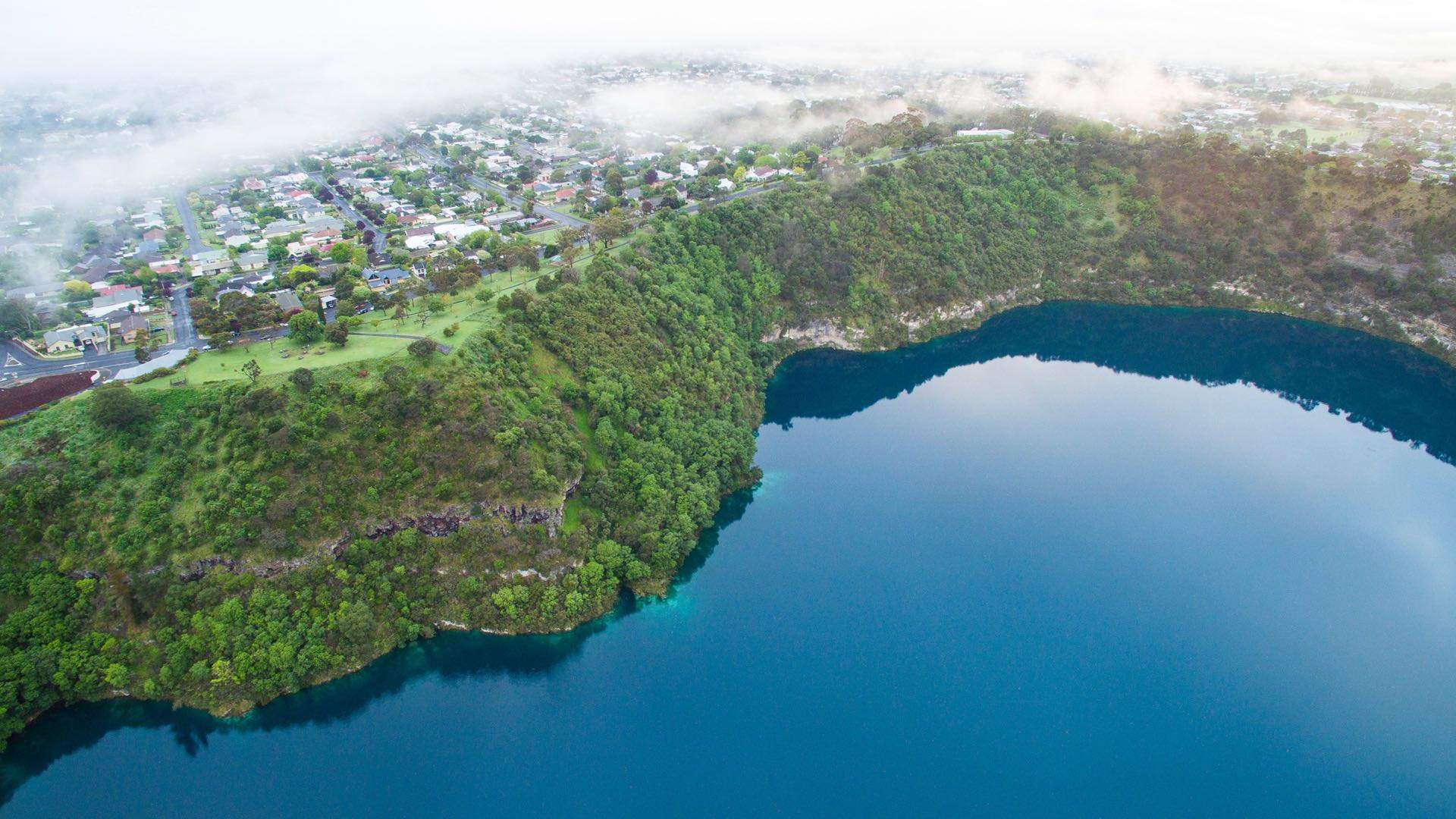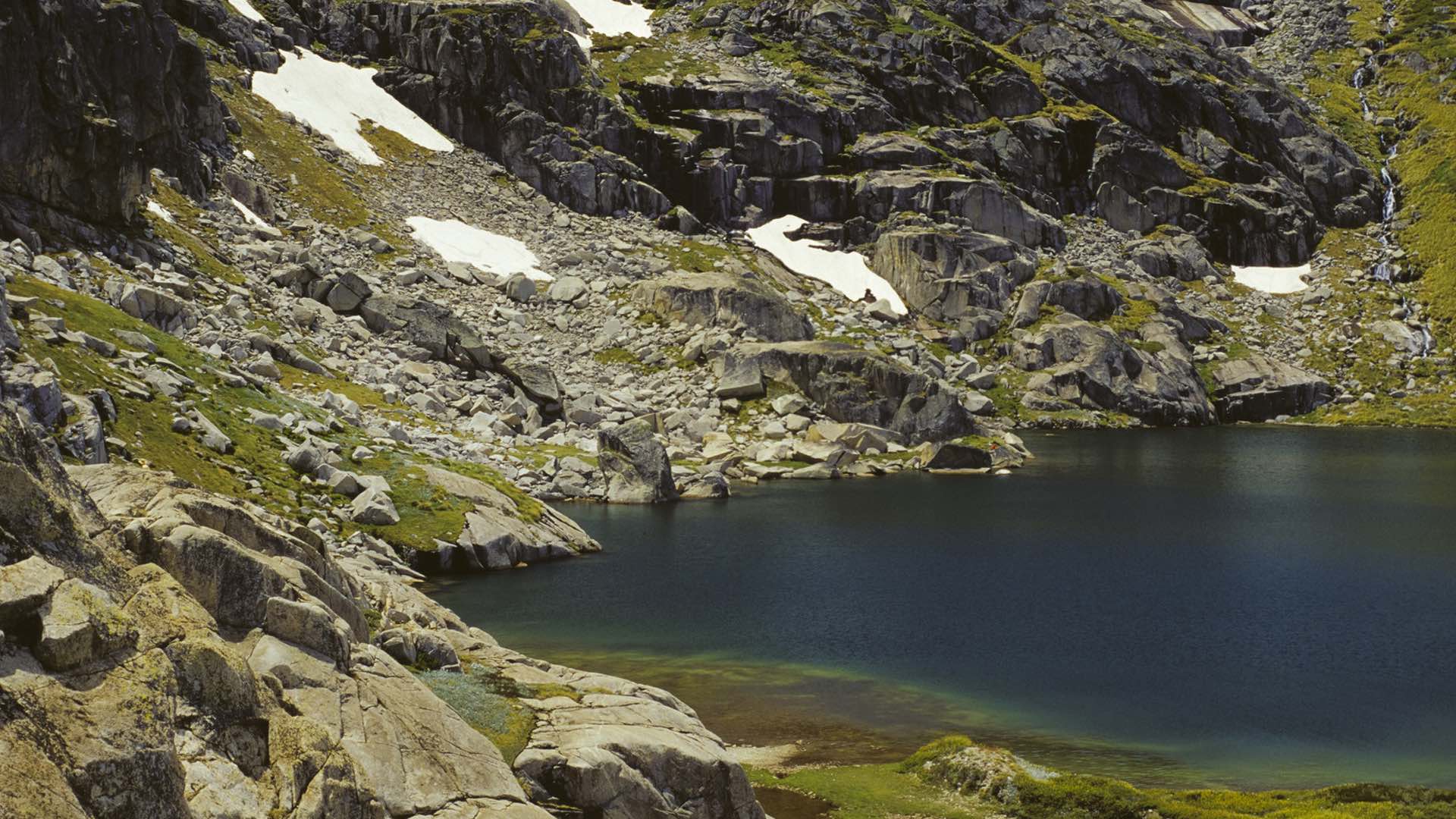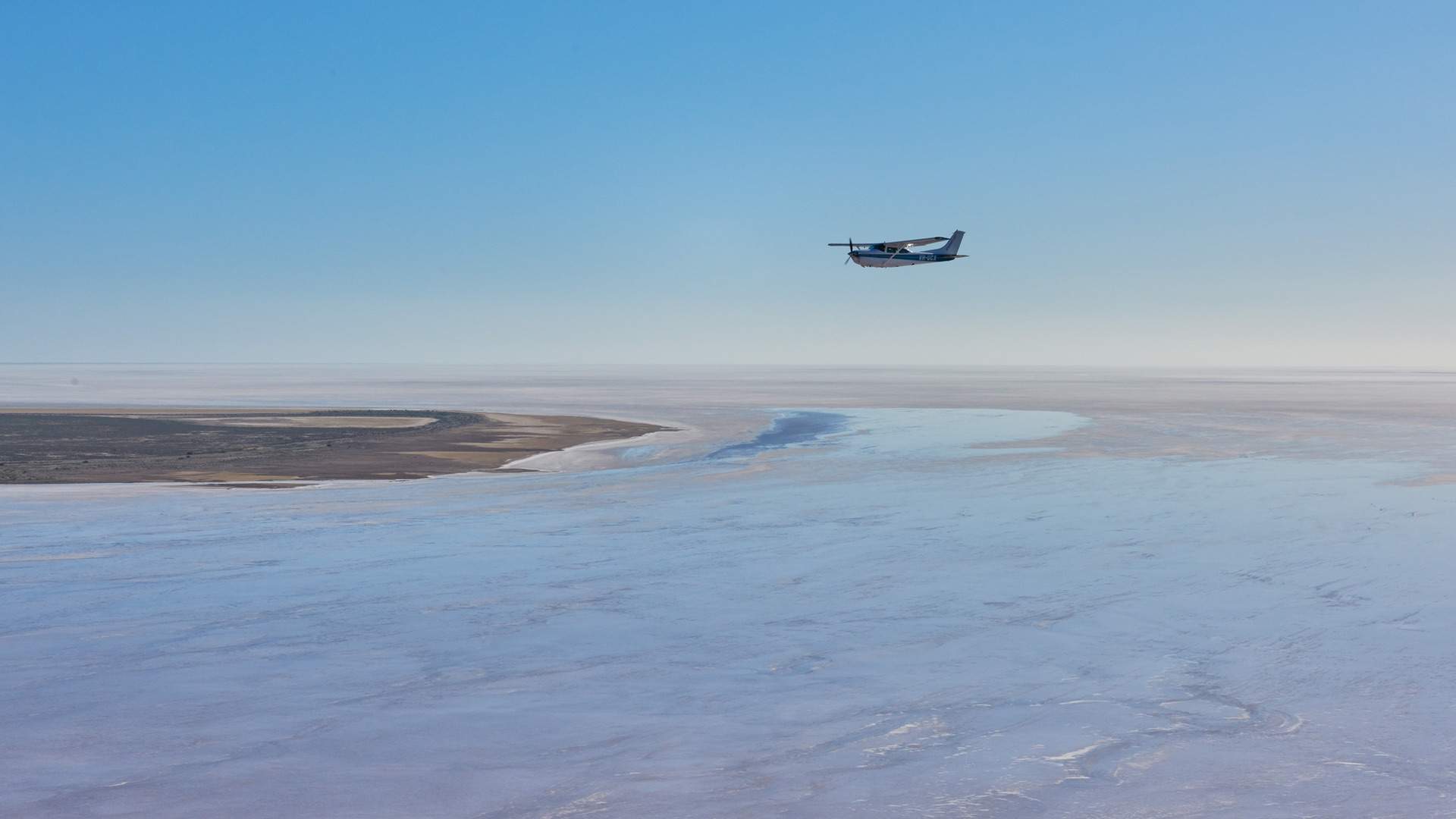The Most Spectacular Lakes in Australia That You Need to See in Real Life
Peel away from the coast to explore tropical swimming holes, bright pink bodies and glassy waters that stretch as far as the eye can see.
In partnership with
There's nothing quite as tranquil as a lake. There's something about the still water that forces your brain to relax — regardless of how wired you've been or for how long. Australia's massive open plains and long mountain ranges create plenty of space for lakes to form, from Western Australia's brilliant pink watery delights to Queensland's tropical swimming holes to the endless expanse of Kati Thanda–Lake Eyre. Been feeling a bit frazzled lately? It could be time to hit the road and spend a day or two beside one of these natural beauties.
From pristine beaches and bountiful wine regions to alpine hideaways and bustling country towns, Australia has a wealth of places to explore at any time of year. We've partnered with Tourism Australia to help you plan your road trips, weekend detours and summer getaways so that when you're ready to hit the road you can Holiday Here This Year.
Under current COVID-19 restrictions in Australia, there are restrictions on where you can go on holiday. Bookmark this for when you can explore once again.

HUTT LAGOON, WESTERN AUSTRALIA
If you like your pink gin, flowers and homewares, you need to visit Hutt Lagoon. It's quite remote, being located on the Coral Coast, around 515 kilometres north of Perth, between Port Gregory and Kalbarri. If you're visiting on a road trip, you'll get the best views along Port Gregory Road. But do be tempted to see it from the air on a scenic flight. Hutt Lagoon's pink is always changing, with the most stunning shades usually on show at sunset. The lake gets its colour from dunaliella salina, which is an algae that produces caroteinoid.

LAKE MCKENZIE, QUEENSLAND
In sore need of some sand and sun? Make tracks to Fraser Island in Queensland, to visit Lake McKenzie. This natural phenomenon is a perched lake — that is, a special kind of lake that contains rainwater. And rainwater only. Unlike most other lakes, it's sealed off from groundwater and isn't connected with any streams or rivers. On top of that, the sand in and around Lake Mckenzie is made entirely of silica. All this means it's unbelievably clear, whether you're taking a dip or enjoying the views from the shore.

LAKE MUNGO, NEW SOUTH WALES
Strictly speaking, Lake Mungo isn't a lake. But, it was one tens of thousands of years ago. And it's still one of the most important places to see in Australia because it's where the oldest human remains were found, being those of Mungo Man and Mungo Lady, who lived at least 40,000 years ago. If you're up for a road trip, take the 70-kilometre Mungo Track. There are also plenty of walking trails, including the ten-kilometre Zanci Pastoral Heritage Loop and a bunch of short strolls to lookouts and significant spots.

LAKE EACHAM, QUEENSLAND
Around 1400 kilometres north of Brisbane lies Crater Lakes National Park and, within it, you'll find Lake Eacham. This dreamy spot — formed by a volcanic crater — is encircled completely with rainforest. Spend your time in whatever way suits you, be it swimming, fishing, hiking, picnicking or jumping in a kayak (but note that motorboats aren't allowed). Both Lake Eacham and the forest in its vicinity are part of the World Heritage-listed Wet Tropics of Queensland, which means they're protected so tread with care.

LAKE ST CLAIR, TASMANIA
Lake St Clair — found in the southern section of Cradle Mountain-Lake St Clair National Park in Tassie — took two million years to form, via slow-moving glaciers. Of all the freshwater lakes in Australia, it's the deepest, at 160 metres. There are many ways to experience this watery wonder, from short walks to multi-day camping expeditions. If you like a little luxury with your wilderness experience, then a stay at Pumphouse Point or Lake St Clair Lodge might be the way to go.

LAKE EILDON, VICTORIA
Lake Eildon's claim to fame is the town of Bonnie Doon, where you'll find the Kerrigans' holiday home from 1997 film The Castle. These days, it's listed on Airbnb, so you can experience "the serenity" for yourself. But what's less known about Lake Eildon is its epic size. With 515 kilometres of shoreline, the lake is so big that it holds six times the water of Sydney Harbour. You won't run out of territory to explore, whether you spend your time kayaking around Eildon's many inlets or stick to picnicking on land.

BLUE LAKE, SOUTH AUSTRALIA
Maybe Blue Lake should be called Blues Lake. That's because it changes colour. Visit between March and November, and you'll see a deep, dark, wintry blue. Change your schedule to sometime between November and March, and you'll be met with a striking turquoise. Either way, the best way to experience it is on foot via the 3.6-kilometre walking track that follows the shore. You can also go underground on an aquifer tour. Blue Lake is just outside of Mount Gambier, in South Australia's southeast, right near the state's border with Victoria.

BLUE LAKE, NEW SOUTH WALES
One of the loveliest spots on the walk to the summit of Mount Kosciuszko is Blue Lake. It's a cirque lake, which means it was formed by glacial erosion during the Ice Age around 10,000 years ago. Though you can't tell when you're standing on the shore, Blue Lake is a whopping 28 metres deep. Plus, it contains the freshest water on the Australian mainland. Both the lake and the 320 hectares surrounding it were recognised as a Ramsar site in 1996, so they're protected under the Ramsar Convention on wetlands.

KATI THANDA-LAKE EYRE, SOUTH AUSTRALIA
This extraordinary natural wonder is the most famous lake on this list for a few reasons. First up, it's the biggest lake in the country — at 9,500 square kilometres. Secondly, it's home to the lowest point on the Australian mainland, at 15 metres below sea level. Thirdly, when it's full of water, it's as salty as the sea. So don't arrive thirsty. Also, if you're keen to see the lake at its most dazzling, check on water levels before hitting the road. It's dry a lot of the time, with a large amount of water arriving just once every eight years. In fact, during the past 150 years, Kati Thanda-Lake Eyre has filled to capacity on only three occasions.

LAKE HILLIER, WESTERN AUSTRALIA
Another of Western Australia's pink watery sights is Lake Hillier. When we say this lake is pink, we really mean it. We're not talking pale pastel, either — we're talking bright, brilliant, lollipop pink. And what makes the colour even more dramatic is Lake Hillier's location on Middle Island, where it's separated by a narrow strip of land from the deep blue of the Southern Ocean. To get there, you first need to get to Esperance, on Western Australia's southern coast, then catch a boat or plane.

Whether you're planning to travel for a couple of nights or a couple of weeks, Holiday Here This Year and you'll be supporting Australian businesses while you explore the best of our country's diverse landscapes and attractions.
Image: Hutt Lagoon via Tourism Western Australia.
FYI, this story includes some affiliate links. These don't influence any of our recommendations or content, but they may make us a small commission. For more info, see Concrete Playground's editorial policy.
